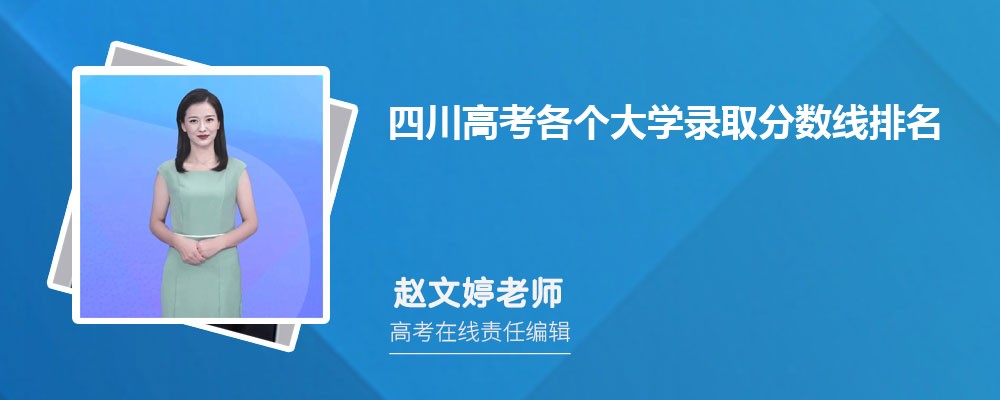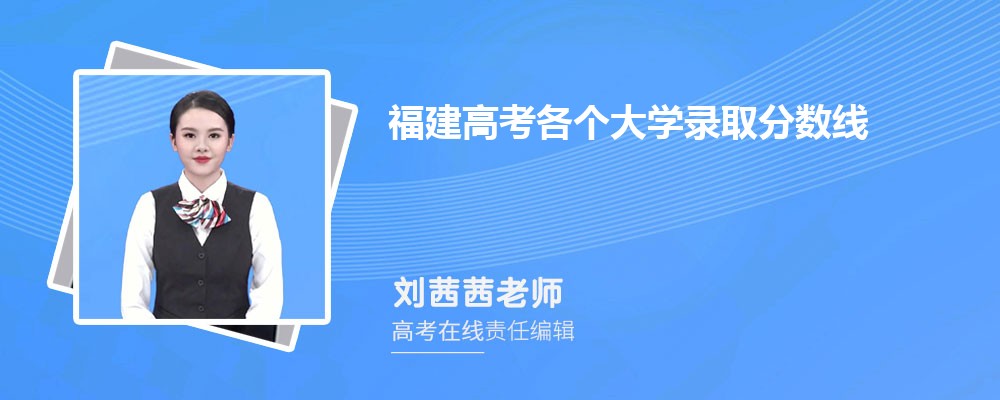高中英语升降调教案1
Good afternoon, everyone. It’s my great pleasure to be here sharing my lesson with you. The content is Senior High English Module 1 Unit 2 Modern heroes. I’ll be ready to begin this lesson from six parts, that is, analysis of the teaching material, analysis of the Students, teaching aims, teaching important and difficult points, teaching methods and teaching procedures. First of all, let me talk about the teaching material.
Part 1 Analysis of the teaching material:
Unit 2 is about different heroes, in which most students are interested. By studying this unit, we’ll enable the students to know how to be a hero and develop their interest in heroes. Lesson 1 plays an important part in the English teaching in this unit. If the students can learn it well, it will be helpful to make the students learn the rest of this unit. This lesson is about a national hero——Yang Liwei who is famous for the first astronaut of China, which, I think, the students are familiar with. There are many new words and expressions related to space flight appearing in the reading material, too.
Part 2 Analysis of the Students:
Aged 15-16 years, the students in Senior1 think actively, respond swiftly and have the courage to express their thoughts and ideas. Just entering high school and lacking in the ability of active learning, however, they haven’t formed a good habit of learning English. When it comes toreading, they haven’t master how to use extensive and intensive reading skills and the abilities of summary and induction as well. In a word, students haven’t mastered the reading strategies. On the other hand, after a certain time of training, they’ve mastered some reading skills, such as group work, using the culture and background knowledge etc.
Part 3 Teaching aims:
According to the new standard curriculum and the syllabus (新课程标准和教学大纲), after studying the teaching material and analyzing the rule of children’s growing of mind, I think the teaching aims are the followings:
Knowledge goals:
●To learn some words and expressions related to space flight appearing in the reading material.
Ability goals:
●To improve students’ basic ability of listening, speaking and reading.
●To practise extensive reading in order to understand the main idea of each paragraph and guess the meaning of new words from the context.
Emotional goals:
●To motivate students’ interest in space exploration of China.
●To help student to learn to cooperate with each other.
Now, let’s come to the Important and the Difficult points.
Part 4 Teaching Important and Difficult points:
The important and difficult points of this period lie in: To achieve the teaching aims better and make the student respond actively to complete the tasks. But how to? According to the analysis of the teaching material and the students’ learning background, I will use the following methods.
Part 5 Teaching Methods:
In my opinion, the main instructional aims of learning English in the High School is to develop the students’ abilities of listening, speaking, reading, writing and their good sense of the English language. So in this lesson I’ll mainly use the “communicative approach” to mobilize the enthusiasm of the students to actively participate in class activities and fulfill the tasks of teaching through teacher-student interaction and group discussion.
At the same time, I’ll also use “task-based approach” in my teaching, which offers the students an opportunity to complete the tasks in which students use language to achieve a specific outcome. I’ll make use of the modern electricity teaching equipment and all kinds of teaching means, which can develop the Ss creativity in learning English.
Part 6 Teaching procedures
Step 1 Lead-in.
Show the students a piece of video: the launch of Shenzhou V
Then ask the students the following questions:
Do you know who was in the spaceship?(Show the picture of Yang Liwei)
What do you know about him? (Show the profile of Yang Liwei )
How do you feel about him?
How did you feel about China’s first manned space flight?
Purpose of my design: This activity can stimulate the interest of students, which naturally leads to the topic of this period.
Step 2 Fast readingAsk the students to skim the passage to complete the task. ( Show the students the exercise on the screen)
Task 1: Divide the class into two groups: boys and girls. Ask them to read the article quickly and the boys circle all the words related to a spaceship’s movement while the girls circle all the words related to Yang Liwei’s movement in the spaceship.
Then ask the boys to judge whether the girls’ answers are right or wrong and the girls do the same.
Purpose of my design: Enable students to understand the given material better using a useful reading skills. Dividing the class into two groups--boys and girls, will create a competition between the boys and girls, which, of cause , makes the studens more actively participate in the class activities.
Step 3 Detailed reading
Task 2: The students have got some basic understanding of the passage after Task 1.This time show the boy students five questions to answer, requiring them to conduct a second reading and get a further understanding of the passage . At the same time ask the girl students to find out the headings of the paragraphs and match them together.
Boys:
1. How did Yang Liwei feel during the flight? How did he feel afterwards?
2. What did Yang Liwei do during the Shenzhou V’s seventh circle of the earth?
3. How many circles did the spaceship complete while Yang Liwei was sleeping?
4. What were helicopters doing as Yang Liwei returned to the earth’s atmosphere?
5. What did Yang Liwei do when he came out of the spaceship?
Girls:
Para.1 Introduction
Para.2 An exciting lift-off
Para.3 During the flight
Para.4 International good wishes
Para.5 Astronaut lands safely
Para.6 Welcome home
Then ask the boys to judge whether the girls’ answers are right or wrong and the girls do the same.
Purpose of my design: The task makes students more familiar with the passage, train their reading speed and reading strategies and develop the students’ capacity of induction.
Step 4 Post reading
(Show some sentences with pictures to students, then ask them to guess the meaning of some words or phrases. )
Task 3: Ask the students to guess the meanings of some words and phrases together with some pictures. Then ask the students to complete the following exercise shown on the screen, using some words and expressions in this passage.
China’s first spaceship at 9 a.m.,October 15,2003. The first Chinese ,Yang Liwei said, “When the spaceship was , I could really feel the high . When the spaceship from the rocket, I suddenly got a feeling of the sky.” During the 21-hour space , the spaceship the earth 14 times. When the space was the earth for the seventh time, Yang Liwei showed the
of China and the UN, the wishes of Chinese to space peacefully. Yang landed . The spaceship was red when it came into the earth’s . The ship was shaking when it let out its . At the same time were ready to save Yang. Yang climbed out of the spaceship, smiled and to the crowds waiting for him.
Purpose of my design: Present some key words and phrases appearing in the passage, and fill in the blanks to increase the students’ ability of language use. Then ask the students to report the answers one by one. This task can test the students’ learning effects.
Step 5 Free discussion
Task 4: Ask the students to Work in pairs. Imagine one is Yang Liwei and the other is a reporter from CCTV. Make up an interview between them.
Example:
Reporter: When did the spaceship lift off?
Yang: It lifted off at 9 a.m. on October 15th, 2003.
R: What did you eat in space?
Y:…...
Purpose of my design: Most students can take their parts in the activities, especially for the Ss who have trouble in English study. In the group activities, they can speak a little English. Without doubt, this will encourage them to speak English. In fact, it is a kind of demand of human being. “Task-based” method is used here to develop the students’ ability of communication and also their ability of co-operation will be well trained.。
Step 6: Homework.
1.What do you think of Yang Liwei? Please write 5 or 6 sentences.
2. Read the article space heroes on page 32
Purpose of my design: I think homework is so important that the students should practise English as much as they can in class or after class. It is necessary for the students to do some exercises after class to master the knowledge they learned, which is an extension of the previous lesson.
高中英语升降调教案2
一、说教材
(一)教材内容及分析
我说课的内容是外研版《英语》(新标准)高中第一册(必修1)Module 2 My New Teachers 的Reading and Vocabulary的短文阅读。本模块以My New Teachers 为话题,介绍了具有不同教学风格和个性特征的教师,旨在通过模块的教学使学生学会描述教师及校园生活,并能运用所学词汇、句型来表达自己的喜好,同时通过学习制定好教师的标准使师生之间相互了解。
Introduction 部分已主要介绍表示个性特征的形容词,并通过听力活动对描述教师风格的陈述进行判断;Reading and Vocabulary部分要求学生利用提供的词汇阅读三篇短文,了解不同教师的教学风格。训练学生围绕学校生活对教师个性特征、教学风格进行由浅入深的描写。
(二)教学目标
根据《新课标》总目标的描述,结合本课的内容,我把本节课的教学目标系统化,分别是:语言知识,能力目标,情感目标,文化意识,和学习策略。
1.语言知识目标
掌握并能运用下列词汇:
tient,serious,intelligent,energetic,amusing,nervous,shy,strict,impression,respect,organise,appreciate,admit…
2.语言技能目标
运用表示个性特征的词汇描述熟悉的人物;理解介绍教师风格的短文,了解不同教师的个性特征和教学风格,获取信息并掌握和理解作者的观点;简单描写自己身边的老师。
3.学习策略目标
搜集和运用所学词汇、短语;对介绍教学风格的材料进行理解、分析、比较和总结;体现自主合作探究相结合。
4.文化意识和情感态度目标
加深对老师的了解和热爱, 既发挥学习主动性也配合教师的教学工作,实现感情交流, 使师生关系更加融洽。
(三)教学重点与难点
重点:围绕学校生活对教师个性特征、教学风格进行描写。
难点:了解不同教师的教学风格,并运用于实际。
二、说学情
在教学过程中,对学情的了解是教师因材施教的关键。高中的学生注意力有一定的稳定性,观察能力很强,具有一定的目的性,系统性和全面性,已经初步实现从具体思维向抽象思维的过渡。他们喜欢富有个性化的教学设计,喜欢接受新鲜事物。同时,自我意识增强,拥有强烈的主观能动性。尤其是海南省新课改实施以后,他们更是拥有很强烈的自我展现意识与欲望,不但在乎别人对自己的评价,更渴望得到别人的关注和赞赏。他们已具有了一定的自主合作和探究的能力,具有了一定的英语语言知识和英语应用的能力,具备了基本的英语思考和英语表达的基本技能。
因此,设计这节课时,我充分考虑到学生的主体性,把自己作为与学生一起探讨的一员,以亦师亦友的身份走进他们,以基础的语言启发他们,以轻松的话题开始,以愉快的交流展开合作,充分创造机会让同学们都拥有成功的喜悦,在和谐的氛围中探究并完成教学任务。
三、说教学方法
新课程提倡运用任务型教学途径,围绕核心问题,设定小任务;围绕文章内容,尽可能提供训练学生技能的机会;开展自主性学习的课堂活动,强调合作探究与独立思考相结合。任务型教学:任务型教学强调语言学习应该是在“做中学”“用中学”。任务设计应该贴近学习者的生活,才能激发学习者的背景知识,激发他们的学习的兴趣,语言才能在经意中习得(incidental acquisition).
这节课本人主要采用任务型教学法和活动教学法,借助多媒体展开教学活动。通过运用阅读技巧,如查读等方式提高阅读能力,从而使学生掌握阅读策略,同时围绕文章设计多种语言活动,以自主合作等多种形式,引导学生根据不同的学习任务尝试使用不同的学习策略,使良好的学习习惯得以培养,自主学习和合作得以发展,交际能力和综合运用能力得以提高。
四、说学法
通过本课教学,我将主要培养学生掌握以下学习方法:
1.参与式学习法:培养他们从练中学,在学中用,通过设置符合学生知识水平的活动让学生参与、体验、实践,并从中品味在活动中的乐趣。
2.知识迁移法:培养学生善于运用所学知识来分析和解决问题的能力。
3.合作学习法:通过小组形式完成多种活动,培养探究和合作意识与能力。
五、说教学过程
Step1. Lead-in(Brainstorming)
让学生分成两大组,男生一组,女生一组,进行竞赛,使用学过的形容词描述老师,说出最多形容词的小组获胜。
T: What shall we talk about today?
S: My New Teachers.
T: You have already been students for about 9 years. During the 9 years, you must have met different teachers.
Could you use some adjectives to describe these teachers?
S: Yes.
T: Let’s play a game. I’ll divide the class into two parts. One part is boys, the other is girls. Let’s see which group gets more words.
第一环节:导入与复习。这部分起到复习旧知导入新知的作用。主要任务是使用学过的形容词描述老师,既复习了上节课涉及到的词汇,又很自然地进入到今天主要谈论的话题。为避免学生对词汇复习感到枯燥无味,于是采用游戏形式Brainstorming完成,程度地调动了学生的学习兴趣,所以这部分也属于激趣阶段。Step2: Pre-reading
1.把课文中的三位教师的图片扫描到电脑上展示给学生看,在课件中通过呈现照片使学生对课文中的三位老师产生亲切感,让学生描述着三位老师,并根据图片猜测三位老师的个性和风格,尽可能用学过的词汇表达自己对三位教师的第一印象。
2.让学生带着Reading Activity1中的两个问题,进行听力训练,使学生初步感知课文内容,训练学生的听力扑捉能力,为进一步的阅读理解打下基础。
T: Talking about teachers is an interesting topic for students all the time.
Now, we’ll read three compositions about three teachers written by their students. And we’ll know more about them. Let’s know them first.
S: Mrs Li, Mr Wu, Mrs Chen.
T: First, let’s listen to the tape and try your best to answer the two questions.
1. Which teachers do students like a lot?
2. Who is a very good teacher but is serious and strict?
Step3: While-reading
1.总体阅读文章,只要求理解,核对听力中的两个问题的答案。
2.每个学生一边阅读一边记下不懂的地方,然后两人一组,互相帮助解决语言形式引起的理解问题,如,生词或短语,完成课本上的Ativity2&3的词汇练习。
3.再一次阅读,回答课文中Ativity4的问题,培养查读技能。
(1) Which paragraphs tell us what the teachers look like?
(2) What subjects does each teacher teach?
(3) Who is the most popular teacher?
(4) Who is the kindest teacher?
(5) Which teacher is students most afraid of?
(6) Which teachers explain things clearly?
4.全班分为三大组,每一组分别对课文进行小结,完成表格。这一活动培养学生的合作精神和总结能力。利用表格进行读书摘记,使课文内容化繁为简,思路清晰,易于对比三位老师的个性特征和教学风格。
Name
Subject
Appearance
Personality
Examples
Mrs Li
Mrs Chen
Mr Wu
Step4.Post-reading
1.让学生两人一组,讨论下列问题:
Which teachers do you like best, Mrs Li, Mrs Chen or Mr Wu? Why?
2.呈现学生身边任课教师的真实照片,让学生运用所学词句描述自己熟悉的老师特征。让学生四人一小组讨论,然后写下要点进行汇报。
这一环节属于学生语言能力的拓展、知识的灵活运用。通过呈现学生身边任课教师的真实照片,让学生运用所学词句描述自己熟悉的老师特征这一活动联系了学生的真实生活,学生比较感兴趣,每个学生都有话要说。通过这一活动,使学生把所学语言运用于实践当中。
通过以上各个环节的设计与实施,从多方面强化语言技能的训练,全面培养学生的综合英语能力。
Step 5. Homework:
Write a composition about your favorite teacher.
六.板书设计
1. Words describing your teacher:
Team1(Girls) Team2(Boys)
Patien kind
Lively popular
... …
2.利用多媒体课件展示一些图片、阅读理解问题和读书摘记表格。
高中英语升降调教案3
Lesson Plan Interpretation
NSEFC Book1 Unit3 Travel Journal
Hello, everyone. It’s an honor for me to stand here and interpret my lesson. The lesson plan I am going to talk about is from NSEFC Book 1 Unit 3 Travel Journal. I’ll explain how to teach and why do so from the following 5 aspects: the theoretical basis, understanding of the teaching material, teaching methods and studying ways, teaching procedure, blackboard design.
Ⅰ. The theoretical basis
First, I’d like to show my theoretical basis--schema theory and top-down model (Goodman, 1971). Journey down the Mekong is a reading course. According to schema theory, reading comprehension is an interactive process between the reader’s background knowledge and the text (Carrel and Eisterhold, 1983), or between the new information and the old knowledge store (Anderson and Pearson, 1984). So in order to improve the students’ reading speed and reading comprehension, language teachers should try to activate the Ss’ old knowledge store and add more relevant background knowledge before they get the students to read. According to the top-down model, general idea of the text will be got first, and then come the details.
II. Understanding of the teaching material
My understanding of the teaching material includes 3 parts: the status and the function, teaching objectives, the important and difficult points.
At the beginning, let’s focus on the first part. Journey down the Mekong is a piece of travel journal written by Wang Kun. It’s mainly about Wang Kun and his sister’s dream of taking a great bike trip down the Mekong River, their preparation for the trip and some more details of the Mekong River. General speaking, it is not difficult for the students to understand the text, but there are some new phrases and sentences that may be a little bit difficult. So before the students’ first reading, I will explain the new words and phrases briefly and after reading the whole passage, I will embody the usage of the news words and phrases, and get the student understand the difficult sentences. As it is a piece of journal, besides learning the new words and phrases, students can get the general idea of how to write a journal.
That’s all for the first part, now let’s move to the second part. According to the teaching material and the new curriculum of English, in order to fulfill the learning task of this lesson, I establish the following objectives:
a) Knowledge objectives
By the end of the lesson, Ss will have a better understanding of the meaning and structure of the text. Then Ss will grasp some useful words and expressions such as determined, make up one’s mind, give in, be fond of …, care about…, stubborn, etc.
b) Ability objectives
Actually students should be encouraged to do speed reading in the first period of reading lesson. But the students in my class are lack of independent reading ability. In this class, I will encourage and help them to read, think and find out information by themselves most time. Since the main objective of reading course is to improve the Ss’ reading ability, I’ll train their ability of identifying the general idea in the fast reading. And in intensive reading their ability of information-gathering and summarizing is developed. And the whole class is for Ss to develop their reading skills as scanning, skimming, information-gathering, summarizing and guessing the new words from the text.
c) Moral objectives
Though Journey down the Mekong is mainly about the trip down the river, it also talks about the scenery and life along the river. So before learning the text, we will have a short discussion about the importance of the river. I want the Ss to have the awareness of protecting the river and protecting our environment.
Well, so much for the teaching objectives, let's come to deal with the third part: the important points and the difficult points. According to the national curriculum of English and language learning theory, when teaching reading, we should encourage the Ss to do speed reading for the first time, that’s to say, we should encourage our Ss to read as fast as they can when they do the first reading. So much emphasis should be put on reading skills and reading comprehension as well. So the important points are that how to make Ss grasp the new words and phrases and how to improve their reading skills as scanning, skimming, information-gathering and summarizing. As to the difficult points, they are the same as the important ones.
III. Teaching methods and studying ways
That’s all for my understanding of the teaching material. Now let’s focus on the ways of teaching and learning.
Generally speaking, I adopt task-based language teaching and communicative approach in my class. As for learning, Ss will learn through independent reading, discussing and cooperating.
I will use computer and blackboard as my teaching aids.
Ⅳ. Teaching procedureHere comes the most important part, the teaching procedure. It includes 5 steps: Step I: Lead-in and pre-reading, Step II: While-reading, Step III: Consolidation, Step IV: Post-reading, Step V: Homework.
Step I: Lead-in and pre-reading (7mins)
Now let’s come to the first step. There are three activities in this step and I will spend 7mins on them.
In activity one, I will ask Ss two questions "Do you know some great rivers in China?" and "Why they are great?” Here, as the Ss get familiar with the Chinese great rivers, I choose to ask them some great rivers in China. And the answer to the second question can lead in the next activity--brainstorming.
In activity two, I will ask the Ss to discuss in pairs and answer the question "How do people who live along a river use it?” My purpose of this activity is to remind the Ss the importance of the river, thus stimulate the Ss' awareness of protecting the rivers.
In the last activity, I will show the Ss a picture of the Mekong River and ask them to list the countries that it flows through. This activity leads in the while-reading.
Step II: While-reading (21mins)
While-reading is the main part and it will take 21mins. Here I adopt the top-down reading model. This step is divided into 2 parts: fast reading and careful reading. Before reading, I will ask the Ss to predict what will talk in the text according to the title. It can exert the Ss' imagination.
1) Fast reading
During fast reading, I will ask the Ss to reading the whole passage quickly and get the main idea of each paragraph. Usually, the main idea of each paragraph is the first sentence or the last sentence, but this text is not. So the main idea of each paragraph will be matched because the Ss are lack of the skill of summarizing the main idea by themselves.
2) Careful reading
After getting the general idea of each Para., I will deal with the details Para. by Para..
In paragraph one, I will ask the Ss to read quickly and do the exercises T or F. And if it is F, I will ask them to correct it. This exercise can help the Ss get the key information of the first paragraph in a short time and can deepen the Ss’ understanding of the first paragraph.
In paragraph two, I will ask Ss one question “Is it a difficult journey to cycle along the Mekong? Why?” This can help the Ss develop their ability of summarizing. If the Ss can’t answer the question briefly, I will encourage them to find the key sentences and try to join them together.
And in the last paragraph, I will ask Ss two questions “How does the water of Mekong River change?” and “What can you see when you travel along the Mekong River?” Both questions are required to answer in keys word. In order to lower the difficulty of the questions, I will show them the examples. After that, I will present some pictures to deepen the Ss’ impression on the new words. And these two questions can help the Ss gain a deeper understanding on the Mekong River.
Step III: Consolidation (6mins)
After dealing with the detailed information of each paragraph, I will ask the Ss to read the whole passage again and answer two questions to consolidate what they’ve learnt. It will take 6 minutes. The two questions are “Where is the source of the Mekong River and which sea does it enter?” and “How do Wang Kun and Wang Wei prepare for the trip?” It is easy for the Ss to find the answer to the first question in the text. As to the second question, it may be a little difficult, so I will list some tips for the Ss to find the answer more easily.
Step IV: Post-reading (10mins)
That’s all for the while-reading. Now let’s move to the fourth step. In this step, I will design two activities and I will spend 10 minutes on them.
The first activity is filling in the blanks. In this activity, Ss are required to find the different attitudes of Wang Kun and Wang Wei to the trip, and then the teacher will express her attitude to this trip. After demonstrating, Ss are encouraged to express their attitudes. It can help the Ss train their ability of information-gathering and expression.
The second activity is thinking. In this activity, I will ask the Ss to discuss in groups of four and try to use some words to describe the characteristics of Wang Kun and Wang Wei according to their attitudes. It is really difficult, but it can not only train their ability of analysis and comprehension, but also cultivate their spirit of cooperation
Step V: Homework (1min)
Finally it comes to the homework. Ss are required to review the learnt lesson and underline the useful words and phrases in the text. This one is for them to consolidate what they’ve learnt and make preparation for the next lesson—Learning about the Language..
Ⅴ. Blackboard design
On the top, there is the title of this lesson. On the left, it lists some important roles that the river plays. On the right, there are some useful words and expressions.
That’s all for my interpretation. Thank you for your att
高中英语升降调教案4
1.a healthy diet健康饮食;
a balanced diet平衡的饮食
2.in different way用另外方式
3.most often最经常
4.feel frustrated感到沮丧
5.by lunchtime到午餐时间
6.must have happened一定发生过
7.at the end of the street在街道的尽头
8.be tired of 厌倦
9.be amazed at sth. 对...感到惊奇
10.throw away扔掉
11.get away with 逃脱
12.tell lies说谎
13.energy-giving food提供热量的食物
body-building foods提供营养的食物
14feel fit保持精力旺盛
15.the weakness of the diet饮食的弱点
the strength of the diet饮食的优点
16.do some research into做一些...方面的研究
17.earn one’s living谋生
18.be in debt负债
19.glare at怒视
20.move round绕过
21.spy on在暗中侦察;打探
22.upset sb.使......不安
23.look ill 感到不舒服feel sick感到恶心
24.heavy food不易消化的食物
25.chat(ting) about聊起关于......
26.serve with用......配
27.rather than而不是
28.cut down减少
29.before long不久
高中英语升降调教案5
一、将来完成进行时
1.概念:表示动作从某一时间开始一直延续到将来某一时间。是否继续下去,要视上下文而定。
2.基本结构:shall/will have been doing
3.例子:I shall have been working here in this factory for twenty years by the end of the year.到今年年底,我将在这个工厂工作20年了。
If we don't hurry up the store will have been closing before we get there. 咱们如不快一点儿,等我们到了那儿,店门就会关了。
二、 过去将来完成进行时
1.概念:表示从过去某时看至未来某时以前会一直在进行的动作。
2.基本结构:should/would + have + been +现在分词
3.例子:He told me that by the end of the year he would have been living there for thirty years.他告诉我,到年底时,他就在那住了30年了。
高中英语必修三语法知识
使用被动语态应注意的几个问题:
1. 不及物动词无被动语态。
What will happen in 100 years.
The dinosaurs disappeared about 65 million years ago.
2. 有些动词用主动形式表示被动意义。
This pen writes well.
This new book sells well.
3. 感官动词或使役动词使用省略to的动词不定式,主动语态中不带to ,但变为被动语态时,须加上to 。 例:make somebody do something→somebody+ be +made to do something
see somebody do something→somebody +be +seen to do something
A girl saw my wallet drop when she passed by.→My wallet was seen to drop by a girl when she passed by. The boss made the little boy do heavy work.→The little boy was made to do heavy work by the boss.
4. 如果是接双宾语的动词改为被动语态时,直接宾语(物)作主语,那么动词后要用介词,这个介词是由与其搭配的动词决定。
He gave me a book.→A book was given to me by him.
He showed me a ticket.→A ticket was shown to me by him.
My father bought me a new bike. →A new bike was bought for me by my father.
相关文章
西藏高考各个大学录取分数线排名表和最低位次2024-06-13 17:51:39
内蒙古高考各个大学录取分数线排名表和最低位次2024-06-13 17:50:37
青海高考各个大学录取分数线排名表和最低位次2024-06-13 17:49:36
新疆高考各个大学录取分数线排名表和最低位次2024-06-13 17:48:39
云南高考各个大学录取分数线排名表和最低位次2024-06-13 17:47:34
山西高考各个大学录取分数线排名表和最低位次2024-06-13 17:46:23
宁夏高考各个大学录取分数线排名表和最低位次2024-06-13 17:45:24
陕西高考各个大学录取分数线排名表和最低位次2024-06-13 17:44:26
如何设计英语培训的教学方案五篇2023-08-09 01:48:39
高二第二学期英语教学总结2023-08-08 19:01:01
春季小学英语辅导的教学计划范文2023-08-05 07:18:49
如何设计英语培训的教学方案五篇2023-08-09 01:48:39
高二第二学期英语教学总结2023-08-08 19:01:01
春季小学英语辅导的教学计划范文2023-08-05 07:18:49
英语口语训练资料必备2023-08-03 16:40:23
新学期英语教学研修计划2023-08-07 11:44:23
小学三年级英语课程教案范文五篇2023-08-16 22:13:50









